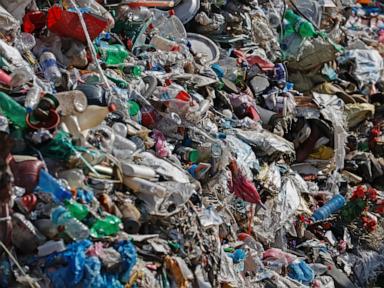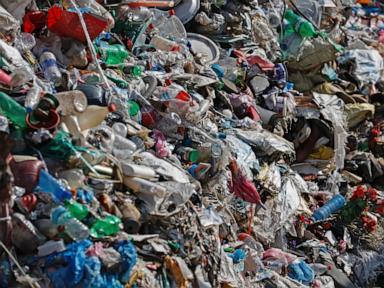ARTICLE AD BOX
CHILLING pictures of petrified mummies reveal how the “Salt Men of Iran” died in terror.
The mummies, the oldest of which is approximately 10,000-years-old, have been naturally preserved in a salt mine in Iran frozen in fear.
 Wikimedia Commons
Wikimedia Commons Getty
Getty Wikipedia
WikipediaDiscovered in 1993 by miners at the Douzlakh Salt Mine, the head of the first corpse known as “saltman”, was so well preserved, archaeologists could clearly that his pierced ear was still holding a gold earring.
The hair, beard and moustache were still intact, as was his leather boot which still contained parts of his leg and foot.
The “Salt man” is estimated to have become trapped in the mine in 300 C.E.
Since the initial discovery in 1993, a further five whole mummies have been found trapped in the salt mines in Tehran.
All of the corpses had the moisture sucked out of their bodies by the salt. The lack of oxygen also meant that the mummies could not decompose.
It has become a treasure trove of historical information for archaeologists who are interested in how the men lived and died.
A study of the first “saltman'” head revealed that the salt encrusted corpse had fractures around his eye and damage to the head.
Meanwhile the fifth “saltman” was so well preserved that researchers could examine his organs.
They discovered that he had tapeworm eggs which indicated that the men consumed raw or under-cooked meat before they met their untimely death in the salt caves.
The best preserved and probably the most harrowing of the bodies is “saltman” number four, a sixteen-year-old miner, caught in the moment of death, crushed by a cave-in.
While six whole bodies have been accounted for, detached body parts have also been found.
The number of potential “Saltmen” bodies is now believed to be eight or more.
Though the eight individuals hailed from various times between the 6th century BC and the 6th century AD, they all showed signs of trauma in the form of fractures and compression.
It is highly probable that all of them were miners who died in collapses or accidents.
Dr Lena Ohrstrom, postdoctoral assitant with the Paleopathology and Mummy Studies Group at the University of Zurich said: “They are rare examples of individuals dating to the ancient Persian periods and are, to date, the only known preserved salt mummies worldwide.”
Along with several mummies, researchers also found iron knives, a woolen trouser leg, a silver needle, a sling, leather rope, a grindstone, a walnut, pottery shards and patterned textile fragments in the salt mines.
The site was protected under Iranian Heritage laws in 2009.
Four of the mummies are currently on display.
The Archeology Museum, in Zanjan, is home to three of the men and the woman, as well as some of the artifacts.
The original salt mummy’s head and left foot are on display at the National Museum of Iran, in Tehran.
The sixth salt mummy to be discovered remains in the mine, as he was too fragile to remove.
 Wikimedia Commons
Wikimedia Commons PLoS ONE
PLoS ONE Wikipedia
Wikipedia PLoS ONE
PLoS ONE Getty
Getty Getty
Getty.png)
 2 months ago
3
2 months ago
3








 English (US)
English (US)